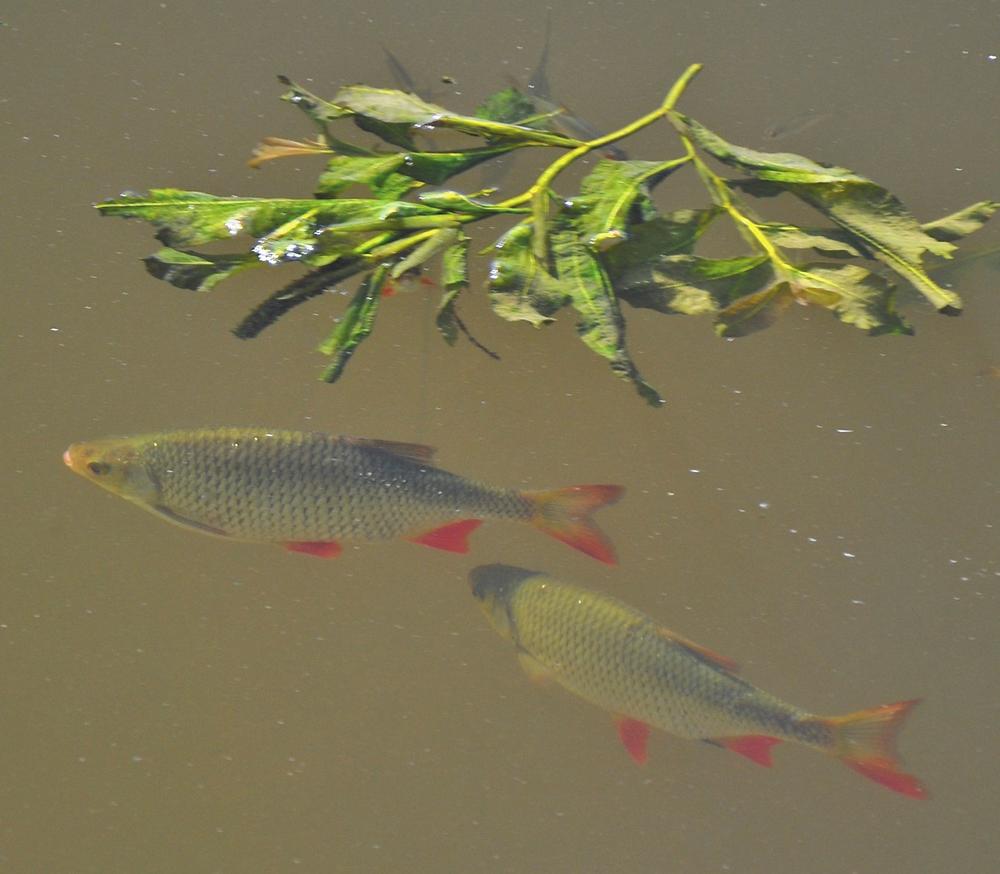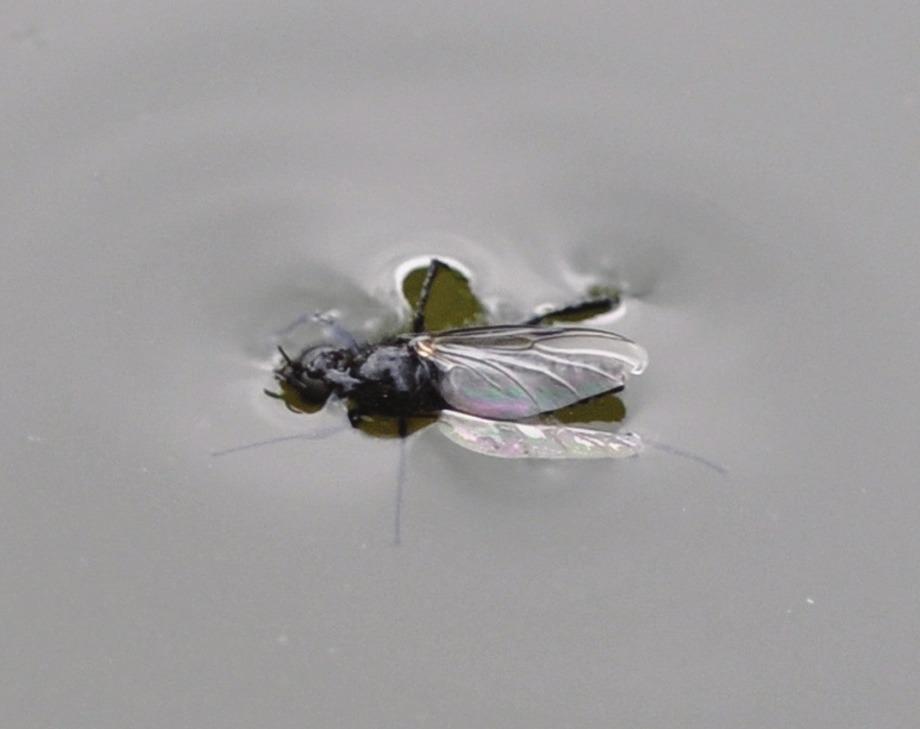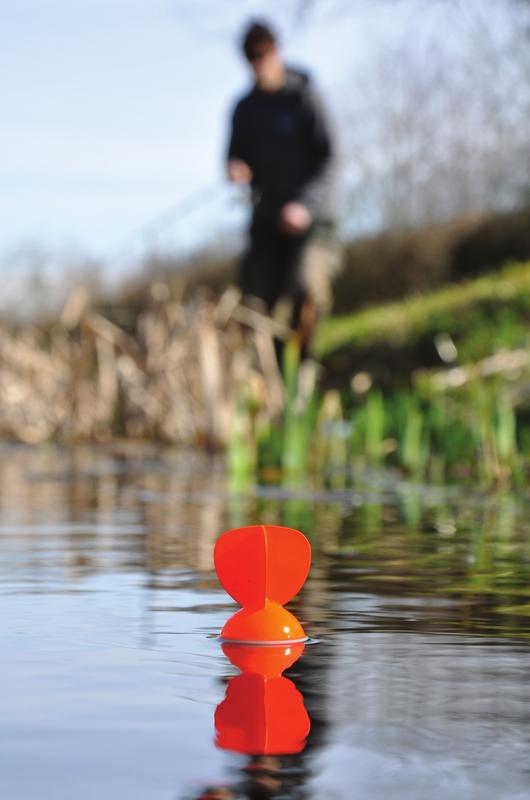A lover of clear, overgrown waters, the beautiful rudd is a fish worth catching on any canal. Watching shoals of these playful fish at the surface is a truly fine way to waste a summer’s afternoon. Introduce a fishing rod and it gets even better.
You won’t find rudd abundant on all canals. They seem to do best in weedy places where water clarity is good. They have a wide diet and are as happy gorging on plant growth as the bugs hiding in it. The wild, shallow canals of the West Country and Ireland strike me as perfect rudd habitat: wild, undisturbed and rich in insect life. In these lush places, rudd can grow large. Indeed, it’s not unusual to find specimens over a pound, and even the occasional 2-pounder on the right canal, even where the local roach barely reach half that size.
My own introduction to the world of rudd fishing began at the back of the Double Locks Inn on the Exeter Canal, where a tub of maggots and four metre whip provided about all the excitement a ten-year-old could handle. And what wonderful looking fish rudd are! With bright golden scales and deep red fins, they possess a deeper profile to the roach and a charm all of their own.
Quarter of a century later, these fish are still a firm summer favourite, although the fibreglass whip is usually replaced by a carbon pole or flyrod. One of the reassuring factors of rudd fishing is that it requires no elaborate equipment or bait whatsoever. Light tackle is a must, with a lightly-elasticated pole or match rod ideal. As far as getting one to bite, maggots, casters, floating bread and artificial flies all have their place.
Nor are rudd difficult to spot. Sometimes in the winter they are taken on bottom-fished baits, but the real cream of rudd fishing is from May onwards when the fish act exactly as nature intended. With a quick eye and a gaping, upturned mouth, rudd are tailor-made for feeding in the upper layers of the water.
This lifestyle lends itself perfectly to visual fishing and while you might happily plant a seat box in a single hot spot, it’s even more enjoyable to don a pair of polarising glasses and travel light in search of rudd shoals.
Groups of smaller rudd can number hundreds, but for the true rudd addict, the jackpot is locating those much smaller, scarcer pockets of large fish. A fish of a pound or more represents an excellent size; a sample of double that weight would be the fish of a lifetime, an old specimen that could be the survivor of fifteen years or more.

Rudd paradise: a warm day on a neglected, rural canal.
Sunny Side Up
The techniques of catching rudd needn’t be complex, but perhaps we should start with the classic weight-building methods. A waggler or pole can be used to devastating effect to present a bait up in the water. For a deadly, slow-sinking presentation, rigs often feature just one or even no shot whatsoever down the line to give a perfectly languid, natural fall of the bait.
Regular loose feed is the key to catching good weights of fish from one peg. Maggots are highly effective, but casters can form a more selective offering to pick off the better shoal fish. Bread is also a safe bet on clear canals, but this is where match and specimen disciplines part: while you might catch dozens of fish on liquidised feed and punch on a small hook, there is no finer big rudd bait than a large pinch of flake or floating crust on a size 10-12 hook.
In warm weather, floating bread is an especially exciting way to target quality rudd. Typically, I would opt to travel light with just one rod and a decent supply of bait, spending no more than half an hour in any one spot. By throwing pieces of broken bread into each swim, you’ll quickly establish whether there are any good fish present. The float rig can be dispensed with entirely in this situation, with a largish piece of crust simply free-lined into the area.
Rudd are not ludicrously shy and do not generally require gossamer-thin tackle. A light float rod and 3lb line is a nice, balanced outfit. While they are not the most powerful opponents, rudd do like snaggy or weedy areas and a large one will wallow straight for the undergrowth if you let it. Awkward places definitely go with the territory and one item of tackle I’m never without when summer rudd fishing is a long-handled landing net. Without a sensible model, extracting a good fish from those absolutely prime, ‘jungle’ areas can be bordering on impossible unless you fancy a swim.
Prime Habitat
If there is one factor more responsible than any other in the scarcity of quality rudd on our canals, it is the ceaseless habitat destruction and alteration of waterways. Anglers are sometimes just as culpable as boat enthusiasts and local councils in their appetite for hacking back weed and plant growth to fashion open, featureless and convenient stretches of canal. In doing so, they remove both the cover and invertebrate life rudd thrive on.
Perhaps it should come as little surprise that many of my favourite rudd haunts are overgrown and neglected sections of canal. While it’s true that every water benefits from some maintenance, I’ve had the best sport of all in rich, weedy water. It’s amazing how quickly anglers will declare such swims as ‘unfishable’ as soon as pegged swims disappear and vegetation flourishes. But if you’re prepared to travel light and get stuck in, the rudd fishing can be phenomenal.
Even the weediest quagmire can be tackled with floating bread or a fly rod. Sadly, rudd are often an easy target for poachers and they are not the hardiest fish, so the best fishing tends to be well away from access points, where casual anglers can’t be bothered to walk.

Large rudd represent the cream of high summer fishing.
We’ve said little of flyfishing thus far, but in terms of both selecting larger fish and the sheer pleasure of the exercise, this is my absolute favourite method. Slow-sinking wet flies such as spiders are excellent, while sunny weather is ideal to try dry flies. Virtually any small pattern will work on fine tackle, but dark and soft hackled is best. Some of the most exciting midsummer activity I’ve witnessed has been the rudd keying in on flying ants, and whether they’re taking the real thing or not, small, dark terrestrial flies are avidly taken in humid conditions.

Sublime viewing: a pair of plump fish hug a raft of floating weed.
So my final advice to the rudd angler is to travel light and keep an open mind. If you only fish comfortable swims and miss out all the overgrown pegs, you’ll only ever realise a fraction of the potential of your chosen canal. Free-lined bread can be excellent, but my best catches have been with the fly. Sessions of half a dozen or more rudd of over a pound, on light tackle, represent truly memorable sport. And best of all, rudd fishing can be brilliant on those scorching hot days that you might easily assume were better for sun bathing than making a red letter catch. Hence, to my mind at least, no summer would be complete without a few afternoons chasing rudd on a quiet part of the Cut.

A rudd snack: undergrowth equals insect life, such as this hawthorn fly.

Humid conditions and a weedy canal signal prime rudd fishing.

Flyfishing is the most exciting method of all, and often selects the bigger fish.

Watching a juicy pike float is one of the highlights of the canal angler’s year.